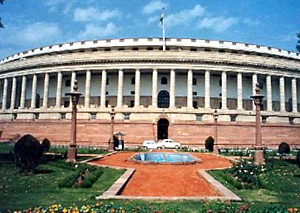 Process of planning in India takes place in three steps- formulating the plan, its implementation and the evaluation. Over the years and due to the political pressures two new aspects have been added to the process, namely decentralisation and popular participation. These are briefly discussed below.
Process of planning in India takes place in three steps- formulating the plan, its implementation and the evaluation. Over the years and due to the political pressures two new aspects have been added to the process, namely decentralisation and popular participation. These are briefly discussed below.
Plan Formulation
The process of plan formulation takes place in a series of steps. The first step in the process of formulating the plan is for the Commission to prepare, on a rough basis, certain schemes and projects in consultation with the union ministries and state governments in the background of the Perspective Plan; to determine some kind of priority; to take stock of the available resources; and to distribute these resources among the different agencies on an approximate basis. These estimates and projections are then placed before the National Development Council (NDC) and the schemes are modified in the light of discussions. These are then sent to the various union ministries and state governments in the form of preliminary instructions.
Then begins the second stage where each union ministry and state government preparing its own plan. The machinery for planning is fairly well developed at the state level. After the states and the union ministries have submitted their plans to the commission, there begins the process of dovetailing the various schemes and programmes into an integrated plan. In this task the Commission consults representatives of different groups in the Indian Parliament. At the end of these exercises the draft plan is published and thrown open for discussion. The universities, the press, political parties, chambers of commerce and industry, trade organisation and other groups and individuals are free to give their comments on the draft.
The next stage is the period of prolonged detailed discussion between the commission and the representatives of different state governments and the central government as a result of which the agreements as to the size and nature of state plans are reached. These tentative agreements are then placed before the cabinet and after its approval sent to the NDC and after the councils recommendations are given the final shape. The plan is then presented to the Parliament and after its approval it is published.
Plan Implementation
It should be noted here that the Commission is an advisory body and has no executive functions. It is only a national organ for plan formulation and a staff body to advise the cabinet. The task of implementation is left to the union ministries and state governments. It is in this field that efforts have been made to introduce the two concepts of democratic decentralisation and the popular participation, particularly after the introduction of the Panchayati Raj in the country.
Plan Evaluation
Evaluation is the last of the three stages in the process. One of the functions of the Commission is to appraise from time to time the progress achieved in the execution of each stage of the plan and make recommendations for necessary adjustment.
The Commission makes such appraisal through:
1) Monthly reports of selected projects, quarterly reviews of the working of the plan and the annual progress reports obtained form the union ministries and the state governments.
2) The advisors who visit the states within their charge and study at first hand the working of the development programmes; and
3) Through the machinery of the Committee on Plan Projects.
In addition, there is the Programme Evaluation Organisation set up 1952. The Programme Evaluation Organisation (PEO) undertakes evaluation of selected programmes/schemes under implementation, as per the requirement of the various Divisions of Planning Commission and Ministries/Departments of Government of India. The evaluation studies are designed to assess the performance, process of implementation, effectiveness of the delivery systems and impact of programmes. The Programmed Evaluation Organisation which functions as an independent unit of the Commission.
Thus discussed above is a step-by-step analysis of the planning process in India.






